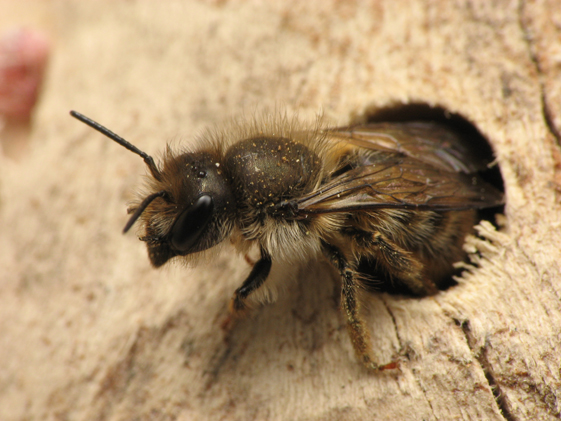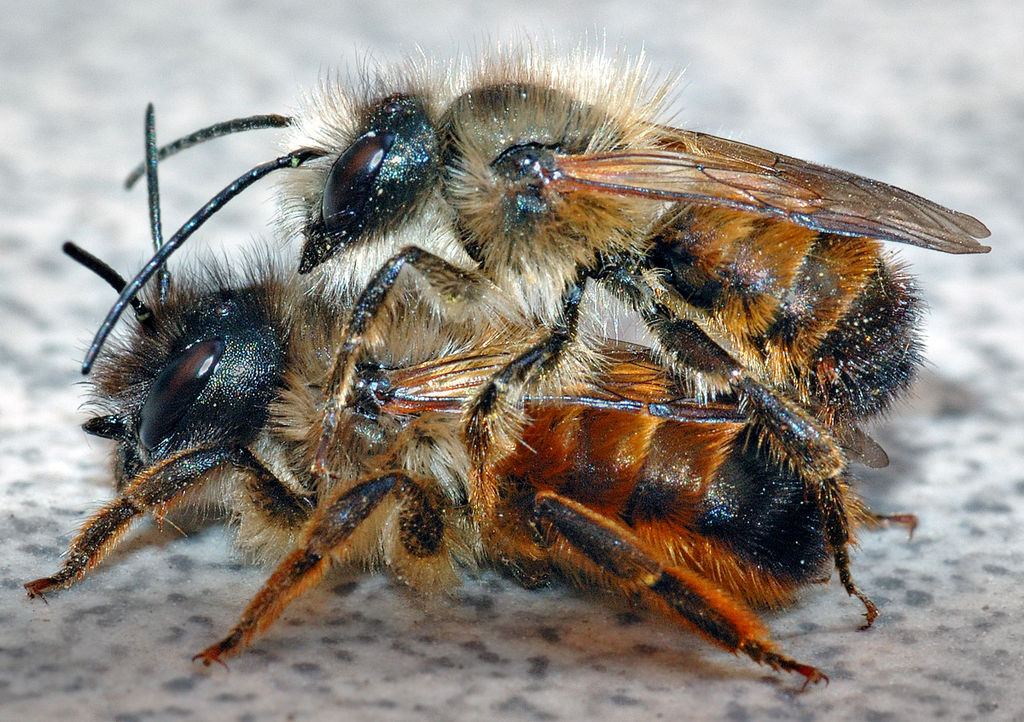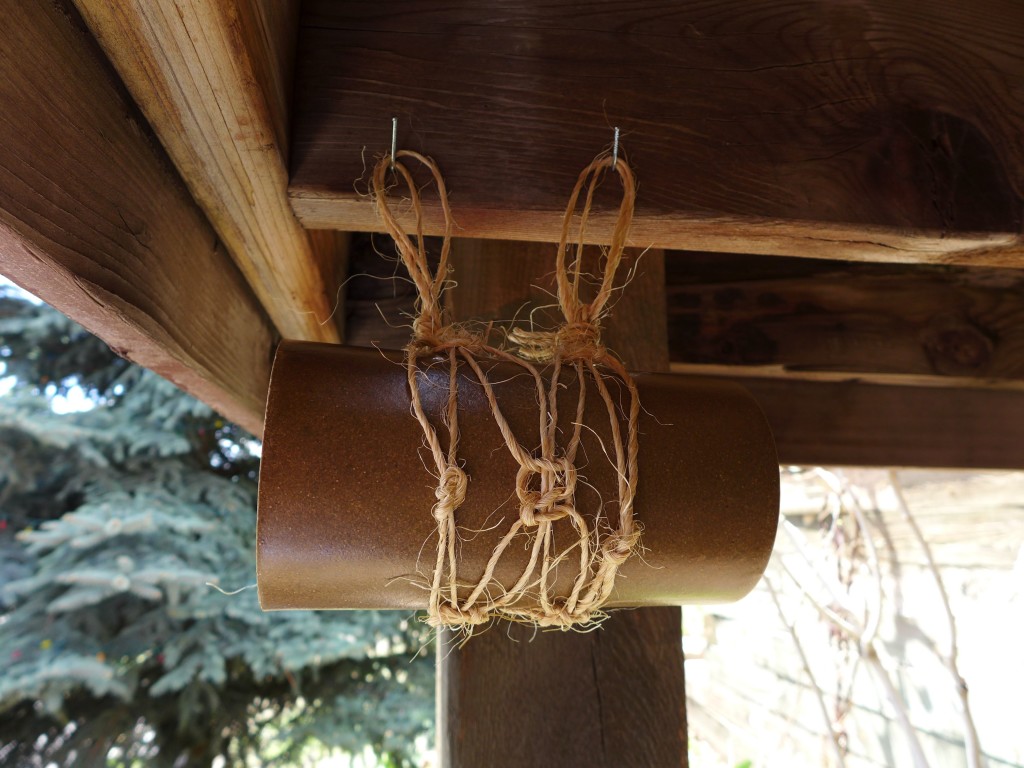Happy Earth Day (again)! We’re excited to check in this afternoon with a second post, especially one about making a space for native bees in your backyard!
You may not be aware, but the honey bees that we all know and love for the pollination services and delicious honey are not native to North America. The bees arrived in North America by Europeans in the 17th century, and they are such efficient pollinators that over time our agriculture became dependent upon the insects. This dependency is due in part to honey bees living in such large colonies that we are able to easily move from field to field in portable hives. I love the idea of fostering different habitats in our backyard for a variety of animals from birds to insects to mammals; especially since observing these animals in our backyard is such a simple way to introduce and connect Alex and Luc to nature. As such, one day I would love to have a colony of honeybees in my backyard, but I know that requires time that I don’t have right now to learn about their care and monitor the hives throughout the year, not to mention the work that would be required to collect the honey. Meanwhile, our native bees are really interesting insects that receive relatively little attention yet are the perfect guests for a low maintenance backyard! Knowing that, we thought Earth Day was the perfect time to encourage everyone to invite these gentle creatures into your yard!
Today when discussing native bees, we’re referring specifically to Mason Bees, of which, there are over 100 species in North America. Unlike honey bees that live in large colonies, Mason bees are solitary insects and they do not produce honey. Another difference between the two types of bees is that Mason bees do not sting unless squeezed or stepped on. For that reason and for their interesting nesting habits (read more below!), they are a great bee to encourage to nest in your backyard; kids will enjoy watching them create their nests without the threat of being stung!
A female Mason bee works alone to lay eggs within hollow reeds or holes wood (often made by other wood-boring insects). She begins by collecting pollen and nectar from flowers that will provide the nutrition for the larva once an egg is hatched. Beginning at the back of her hole in the reed, she will deposit the pollen and nectar mass and lay an egg on it (image above left), then she will use mud to create a wall, sealing off that egg from the next. She will continue depositing pollen and eggs in separate cells until the hole has been filled, laying the female eggs at the back of the hole and the male eggs towards the front.
Over the summer season, the eggs will mature and hatch, and the larva will feed on the pollen and nectar mass. The larva then forms a cocoon around itself (image above right) and enters the pupal stage. By fall, the adult bees have formed within the cocoon, but they will remain there until the following spring, with the cocoon providing a protective insulation for the winter season.
In the spring, the adult males, which are near the front of the nest, hatch first. They remain near the opening of the hole and wait for the females to hatch. Once the females exit the hole, they mate with the males. The males die soon afterwards, and the females begin the process of laying eggs all over again!
So, after all of that information, I hope you’re intrigued by Mason bees and wouldn’t mind hosting them in your back yard (remember, they are unlikely to sting AND will pollinate your garden)! The big question is: how do you create a habitable space for Mason bees?
One of the most important things you can do is to eliminate all pesticides and other chemicals from your backyard. Once you’ve done that, the next step is simple ~ just provide the holes the bees need to lay their eggs. You can do this by drilling holes into pieces of untreated wood or by buying a Mason bee house. I picked up this inexpensive house on Amazon. It uses paper tubes for the holes, and the larger cylinder housing the tubes is made from biodegradable materials.
Inspired by Sarah’s macrame post, I used twine to create a harness for the bee house with loops at the top for hanging (the house did not come with hardware for hanging). I then hung it under our deck in an area where we would see it every day as we walk up the steps from the driveway. It’s nice to hang this particular house under a roof or other form of protection since the biodegradable material will be more vulnerable to breaking down with too much exposure to rain.
And that’s it, a super simple way to encourage native bees to nest in your yard! If you’re not quite ready to welcome bees, then think about hanging a hummingbird feeder (or two or three!) this year.
Now, get out there, enjoy a bit of mother nature, and be sure to give her a big thank you today!
Image sources: solitary bee, egg, cocoon, mating bees







